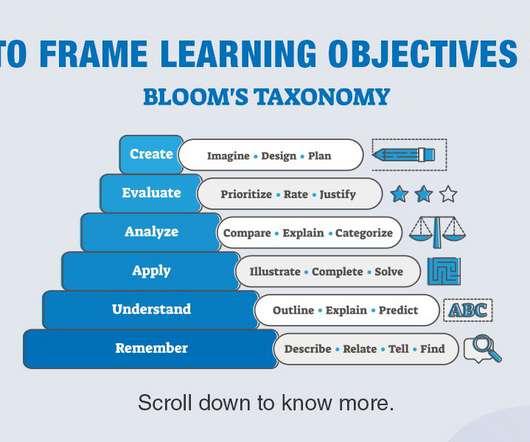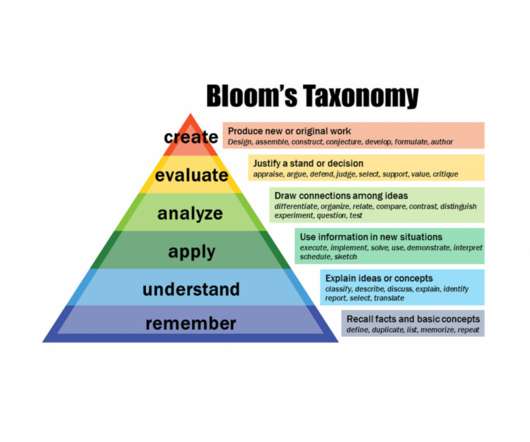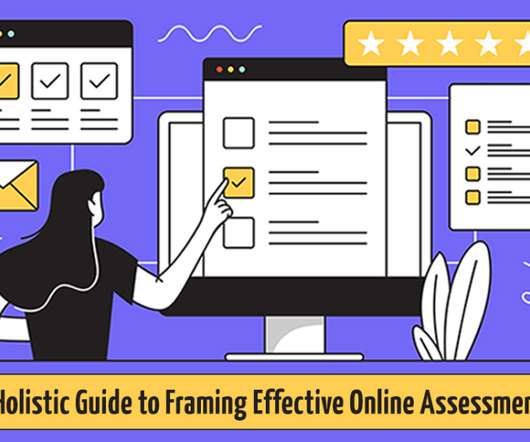Using Bloom’s Taxonomy to Write Learning Objectives
CourseArc
JULY 11, 2016
One of the basic principles underlying the development of any learning content is to pre-determine the intent of that content. In eLearning, framing learning objectives before building the detailed course content is a vital step. Bloom’s Taxonomy offers course developers excellent tools to write effective learning objectives.














































Let's personalize your content